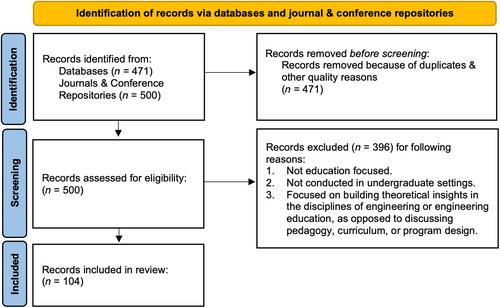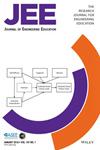Engineering educators prepare students for responsible, ethical, and socially aware engineering practice by contextualizing engineering in a variety of ways. Recently, ABET and the NAE have prioritized engineers' ability to make judgments considering a variety of contexts and specifically advocated for building engineers' contextual competencies.
Educators can often agree that contextualizing engineering work and problems is beneficial, while taking different approaches to that contextualization. It is important for engineering educators to know how their modes of contextualization compare with others, as well as how they define and achieve success.
This scoping literature review answers two research questions: How are engineering educators contextualizing engineering through their programs, courses, and pedagogies? And what are the justifications, motivations, or desired ends of engineering educators' contextualization? The original search yielded 500 articles from pertinent engineering education venues. After detailed exclusion and inclusion criteria were applied, 104 relevant articles were analyzed.
These remaining articles were sorted into six modes of contextualization: context tools, professional skills, real-world problems, design, sociotechnical thinking, and social impact. The categorization and analysis led to a complex understanding of the multiplicity of contextualization in engineering education.
The wide variety of modes of contextualization results in a variety of bettering strategies, or ways that these forms of pedagogy can improve engineering education, and, in turn, larger engineering contexts. We conclude that engineering content and context are “interactional” and co-constructed, showing how different modes of contextualization demarcate different images of what engineering content and contexts are and ought to be.



